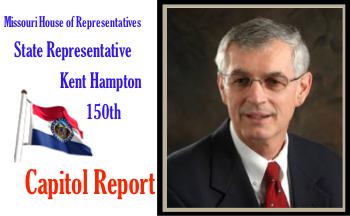
Dee Loflin, SMT Manager/Writer
Christopher Columbus
Sailed the Ocean Blue
Italian explorer Christopher Columbus sets foot on the American mainland for the first time, at the Paria Peninsula in present-day Venezuela. Thinking it an island, he christened it Isla Santa and claimed it for Spain.
Columbus was born in Genoa, Italy, in 1451. Little is known of his early life, but he worked as a seaman and then a sailing entrepreneur. He became obsessed with the possibility of pioneering a western sea route to Cathay (China), India, and the fabled gold and spice islands of Asia. At the time, Europeans knew no direct sea route to southern Asia, and the route via Egypt and the Red Sea was closed to Europeans by the Ottoman Empire, as were many land routes. Contrary to popular legend, educated Europeans of Columbus' day did believe that the world was round, as argued by St. Isidore in the seventh century. However, Columbus, and most others, underestimated the world's size, calculating that East Asia must lie approximately where North America sits on the globe (they did not yet know that the Pacific Ocean existed).
With only the Atlantic Ocean, he thought, lying between Europe and the riches of the East Indies, Columbus met with King John II of Portugal and tried to persuade him to back his "Enterprise of the Indies," as he called his plan. He was rebuffed and went to Spain, where King Ferdinand and Queen Isabella also rejected him at least twice. However, after the Spanish conquest of the Moorish kingdom of Granada in January 1492, the Spanish monarchs, flush with victory, agreed to support his voyage.
On August 3, 1492, Columbus set sail from Palos, Spain, with three small ships, the Santa María, the Pinta, and the Niña. On October 12, the expedition sighted land, probably Watling Island in the Bahamas, and went ashore the same day, claiming it for Spain. Later that month, Columbus sighted Cuba, which he thought was mainland China, and in December the expedition landed on Hispaniola, which Columbus thought might be Japan. He established a small colony there with 39 of his men. The explorer returned to Spain with gold, spices, and "Indian" captives in March 1493 and was received with the highest honors by the Spanish court. He was given the title "admiral of the ocean sea," and a second expedition was promptly organized. He was the first European to explore the Americas since the Vikings set up colonies in Greenland and Newfoundland in the 10th century.
Fitted out with a large fleet of 17 ships with 1,500 colonists aboard, Columbus set out from Cádiz in September 1493 on his second voyage to the New World. Landfall was made in the Lesser Antilles in November. Returning to Hispaniola, he found the men he left there slaughtered by the natives, and he founded a second colony. Sailing on, he explored Puerto Rico, Jamaica, and numerous smaller islands in the Caribbean. Columbus returned to Spain in June 1496 and was greeted less warmly, as the yield from the second voyage had fallen well short of its costs.
Isabella and Ferdinand, still greedy for the riches of the East, agreed to a smaller third voyage and instructed Columbus to find a strait to India. In May 1498, Columbus left Spain with six ships, three filled with colonists and three with provisions for the colony on Hispaniola. This time, he made landfall on Trinidad. He entered the Gulf of Paria in Venezuela and planted the Spanish flag in South America on August 1, 1498. He explored the Orinoco River of Venezuela and, given its scope, soon realized he had stumbled upon another continent. Columbus, a deeply religious man, decided after careful thought that Venezuela was the outer regions of the Garden of Eden.
Returning to Hispaniola, he found that conditions on the island had deteriorated under the rule of his brothers, Diego and Bartholomew. Columbus' efforts to restore order were marked by brutality, and his rule came to be deeply resented by both the colonists and the native Taino chiefs. In 1500, Spanish chief justice Francisco de Bobadilla arrived at Hispaniola, sent by Isabella and Ferdinand to investigate complaints, and Columbus and his brothers were sent back to Spain in chains.
He was immediately released upon his return, and Ferdinand and Isabella agreed to finance a fourth voyage, in which he was to search for the earthly paradise and the realms of gold said to lie nearby. He was also to continue looking for a passage to India. In May 1502, Columbus left Cádiz on his fourth and final voyage to the New World. After returning to Hispaniola, against his patrons' wishes, he explored the coast of Central America looking for a strait and for gold. Attempting to return to Hispaniola, his ships, in poor condition, had to be beached on Jamaica. Columbus and his men were marooned, but two of his captains succeed in canoeing the 450 miles to Hispaniola. Columbus was a castaway on Jamaica for a year before a rescue ship arrived.
In November 1504, Columbus returned to Spain. Queen Isabella, his chief patron, died less than three weeks later. Although Columbus enjoyed substantial revenue from Hispaniola gold during the last years of his life, he repeatedly attempted (unsuccessfully) to gain an audience with King Ferdinand, whom he felt owed him further redress. Columbus died in Valladolid on May 20, 1506, without realizing the great scope of his achievement: He had discovered for Europe the New World, whose riches over the next century would help make Spain the wealthiest and most powerful nation on earth.
A big shout out to the Campbell Cannons baseball team for being Missouri State Champs! See ya in Church Sunday!! The lesson to be learned is “It’s all right to give out, BUT never give up.
As always, it is an honor to serve you in the Missouri House. If you would like to discuss any issue, please call 573-751-3629. You can also email me at kent.hampton@house.mo.gov . I look forward to hearing from you.
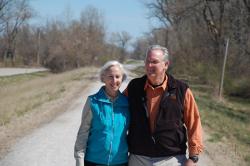
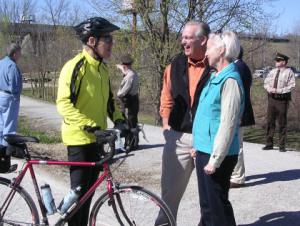
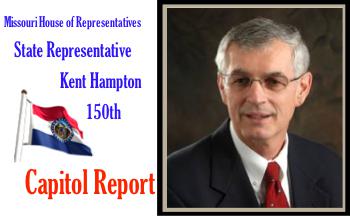
Dee Loflin, SMT Manager/Writer
1st Postmaster General,
Mr. Benjamin Franklin
On this day in 1775, the U.S. postal system is established by the Second Continental Congress, with Benjamin Franklin as its first postmaster general. Franklin (1706-1790) put in place the foundation for many aspects of today's mail system. During early colonial times in the 1600s, few American colonists needed to send mail to each other; it was more likely that their correspondence was with letter writers in Britain. Mail deliveries from across the Atlantic were sporadic and could take many months to arrive. There were no post offices in the colonies, so mail was typically left at inns and taverns. In 1753, Benjamin Franklin, who had been postmaster of Philadelphia, became one of two joint postmasters general for the colonies. He made numerous improvements to the mail system, including setting up new, more efficient colonial routes and cutting delivery time in half between Philadelphia and New York by having the weekly mail wagon travel both day and night via relay teams. Franklin also debuted the first rate chart, which standardized delivery costs based on distance and weight. In 1774, the British fired Franklin from his postmaster job because of his revolutionary activities. However, the following year, he was appointed postmaster general of the United Colonies by the Continental Congress. Franklin held the job until late in 1776, when he was sent to France as a diplomat. He left a vastly improved mail system, with routes from Florida to Maine and regular service between the colonies and Britain. President George Washington appointed Samuel Osgood, a former Massachusetts congressman, as the first postmaster general of the American nation under the new U.S. constitution in 1789. At the time, there were approximately 75 post offices in the country.
Today, the United States has over 40,000 post offices and the postal service delivers 212 billion pieces of mail each year to over 144 million homes and businesses in the United States, Puerto Rico, Guam, the American Virgin Islands and American Samoa. The postal service is the nation's largest civilian employer, with over 700,000 career workers, who handle more than 44 percent of the world's cards and letters. The postal service is a not-for-profit, self-supporting agency that covers its expenses through postage (stamp use in the United States started in 1847) and related products. The postal service gets the mail delivered, rain or shine, using everything from planes to mules. However, it's not cheap: The U.S. Postal Service says that when fuel costs go up by just one penny, its own costs rise by $8 million.
Citizens and Legislators Working Group on Medicaid Eligibility and Reform will hold a hearing to discuss Missouri’s system of Medicaid and will accept public input. The hearing will be held next Wednesday, July 31st at the B.A.I.L.S. center in Kennett from 9 a.m. to 6 p.m. If you wish to testify, please contact our office at (573) 751-3629. Your participation is appreciated.
See ya in Church Sunday!!
As always, it is an honor to serve you in the Missouri House. If you would like to discuss any issue, please call 573-751-3629. You can also email me at kent.hampton@house.mo.gov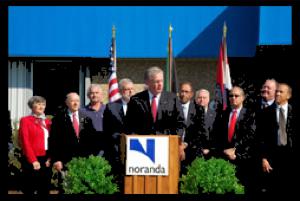
Submitted by
Dee Loflin, SMT Manager/Writer
New Madrid, Missouri - Noranda Aluminum Holding Corporation, a leading North American producer of aluminum, will significantly expand the footprint of its smelter in New Madrid, Gov. Jay Nixon announced today. The facility expansion includes a $45 million capital investment and is expected to create 29 new jobs.
This is the second major investment announcement by Noranda in the New Madrid facility in the past three years. In 2010, the company announced plans to invest $38 million to increase the aluminum smelter's annual metal-production capability by approximately 35 million pounds. The latest investment includes funding for an 80,000 square-foot expansion and the purchase of new state-of-the-art equipment.
"Noranda's continued commitment to expanding its Missouri presence is good news for our economy," Gov. Nixon said. "I'm pleased my administration could support Noranda and help make this project possible to create jobs and stimulate economic growth in southeast Missouri."
Originally founded in 1968, the New Madrid smelter has become one of the largest employers in southeast Missouri and currently employ more than 1,000 workers. The facility expansion will allow Noranda to meet greater product demand by increasing the facility's capacity to produce redraw rod, which is used in many electrical infrastructure applications.
"The aluminum smelter here in New Madrid accounts for approximately 13 percent of total U.S. primary aluminum production," says Layle (Kip) Smith, Noranda President and Chief Executive Officer. "Missouri's skilled workforce and competitive business climate have allowed us to compete in the global market and we look forward to our continued growth in aluminum production."
The state of Missouri helped make Noranda's expansion in New Madrid possible through a strategic package of economic incentives, which the company can redeem if it meets the strict job creation and investment criteria.

